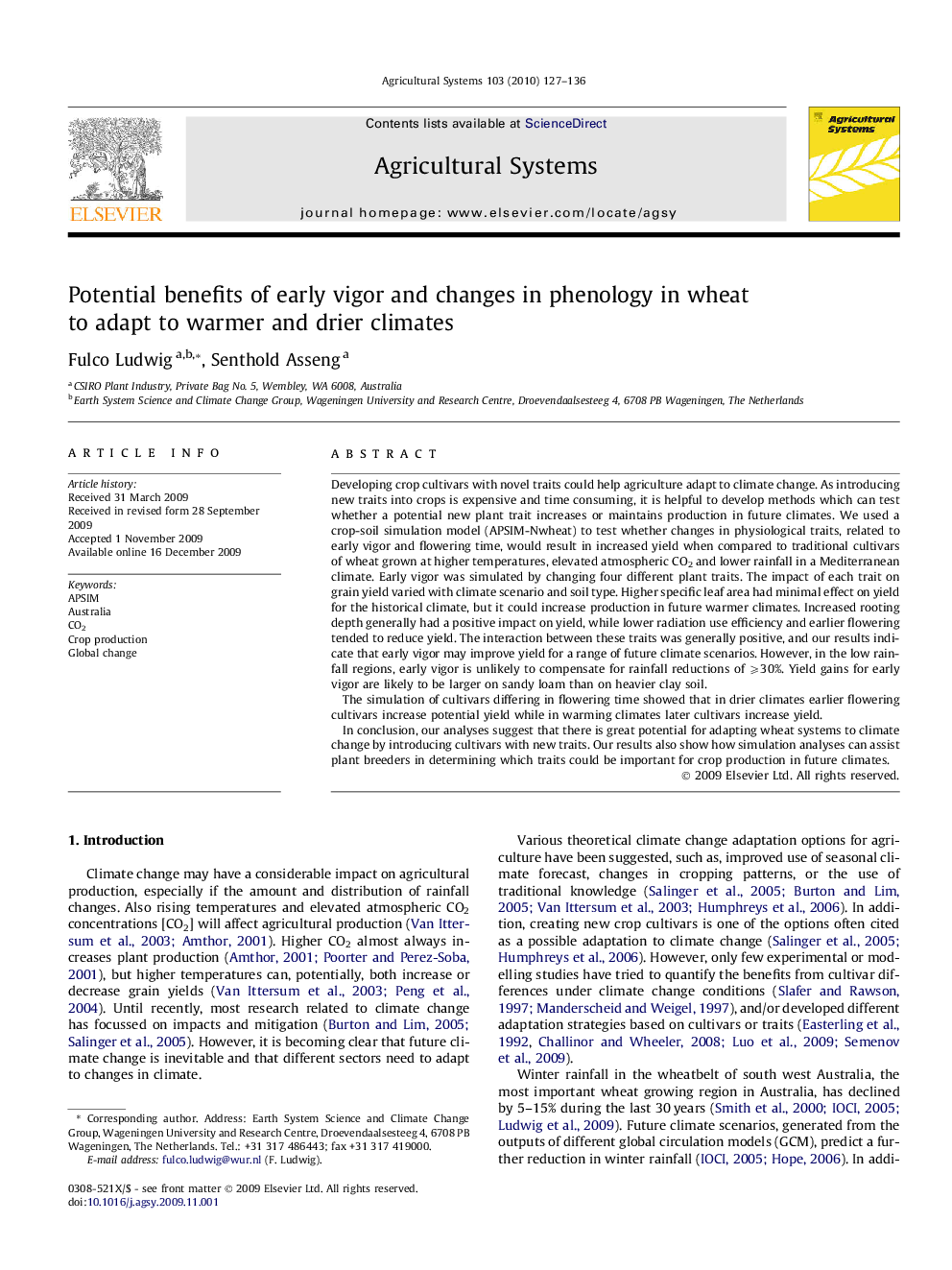| کد مقاله | کد نشریه | سال انتشار | مقاله انگلیسی | نسخه تمام متن |
|---|---|---|---|---|
| 4491731 | 1317876 | 2010 | 10 صفحه PDF | دانلود رایگان |

Developing crop cultivars with novel traits could help agriculture adapt to climate change. As introducing new traits into crops is expensive and time consuming, it is helpful to develop methods which can test whether a potential new plant trait increases or maintains production in future climates. We used a crop-soil simulation model (APSIM-Nwheat) to test whether changes in physiological traits, related to early vigor and flowering time, would result in increased yield when compared to traditional cultivars of wheat grown at higher temperatures, elevated atmospheric CO2 and lower rainfall in a Mediterranean climate. Early vigor was simulated by changing four different plant traits. The impact of each trait on grain yield varied with climate scenario and soil type. Higher specific leaf area had minimal effect on yield for the historical climate, but it could increase production in future warmer climates. Increased rooting depth generally had a positive impact on yield, while lower radiation use efficiency and earlier flowering tended to reduce yield. The interaction between these traits was generally positive, and our results indicate that early vigor may improve yield for a range of future climate scenarios. However, in the low rainfall regions, early vigor is unlikely to compensate for rainfall reductions of ⩾30%. Yield gains for early vigor are likely to be larger on sandy loam than on heavier clay soil.The simulation of cultivars differing in flowering time showed that in drier climates earlier flowering cultivars increase potential yield while in warming climates later cultivars increase yield.In conclusion, our analyses suggest that there is great potential for adapting wheat systems to climate change by introducing cultivars with new traits. Our results also show how simulation analyses can assist plant breeders in determining which traits could be important for crop production in future climates.
Journal: Agricultural Systems - Volume 103, Issue 3, March 2010, Pages 127–136